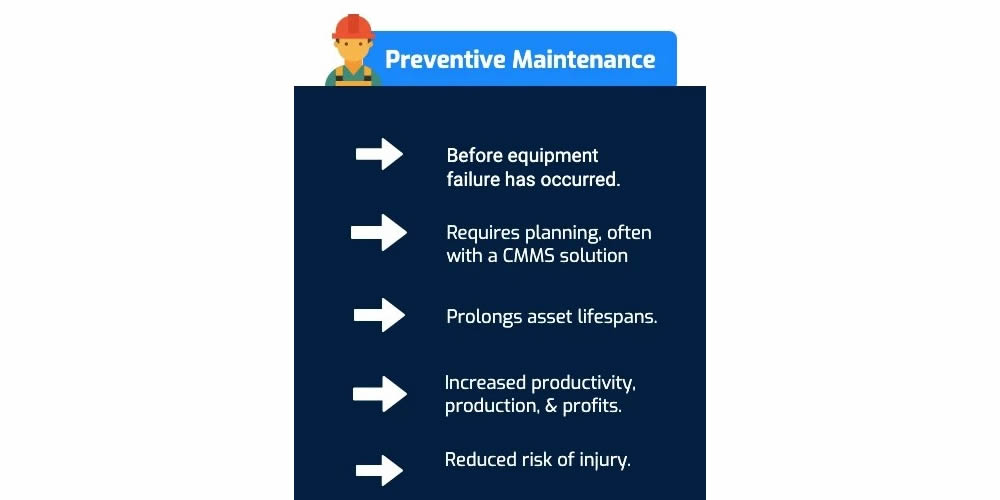Why should you adopt Planned Preventative Maintenance (PPM) on your doors?
A property is more often than not the most valuable asset an individual, company or organisation will own. Consistent planned preventative maintenance (PPM) is key to ensuring the asset holds its value. Residential and commercial properties can degrade quickly without proper maintenance, and this is where effective PPM comes in. Without an effective schedule, minor issues can turn into costly repairs and is often seen in structural repairs and maintenance.
Therefore, planned preventative maintenance or PPM is extremely important when it comes to maintaining the integrity and value of a property or asset by helping it operate safely and efficiently for as long a period as possible.
A planned maintenance schedule is often put in place on a per building basis and monitored by a property or facilities manager. This approach can be found across both the residential and commercial property sectors.
In this article, we will cover what planned preventative maintenance is and explore its benefits with real-life examples.
What is PPM?
PPM stands for Planned Preventive Maintenance, more commonly referred to as simply planned maintenance or scheduled maintenance. It is a proactive approach to maintenance in which specific work is scheduled to take place regularly and consequently documented once it has taken place.
It is performed to help preserve a property’s condition, prevent problems from occurring, and avoid failures or breakages.
What are the Benefits of Planned Preventative Maintenance?
The biggest benefit of planned maintenance is that it ensures any potential issues are identified and addressed before they develop further, minimising any repair costs incurred. Typically, a well-implemented planned maintenance schedule will reduce reactive maintenance costs by 12-18%.
In other words, it brings about great financial advantages, making a Planned Preventative Maintenance (PPM) schedule a must-have, not a nice-to-have for any property owner.
Other significant benefits include:
- Ensures health and safety compliance: a whole roof could collapse without regular inspections, presenting a major health & safety risk.
- Less need for major unplanned repair work: through regular maintenance inspections, you are less likely going to be ambushed by unplanned works.
- More efficient use of manpower and budget: maintenance work and financial costs can be spread more evenly throughout the year
- Meeting warranty requirements: PPM is a requirement for many manufacturers warranty compliance
- Adds value to preserve and enhance property assets: a property in disrepair is, of course, unlikely to fetch a good price.
Real-life Examples of PPM
One misconception about PPM is that it is unnecessarily costly. However, without preventive maintenance, your commercial assets risk the higher cost of lost business due to unforeseen equipment breakdown. Residential landlords could risk losing thousands of rental incomes due to an uninhabitable condition caused by disrepair.
Another side to planned maintenance is that in some cases planned maintenance events are statutory and required to take place by law. For example, as part of the management of any residential dwelling, a gas safety check must be done every year on each gas appliance and a valid certificate must be given to the tenant before any new lease starts.
Residential Property Management (Lettings)
- Gas Safety Certificate
- Boiler Service
- Property condition surveys
- Roof inspections
- Electrical Safety Standards
- Energy Performance Certificate (EPC)
Multi-occupied buildings (Leasehold Blocks and Social Housing)
- Fire Risk Assessments
- Lifting Operations and Lifting Equipment Regulations (LOLER)
- Lift Engineering Insurance Inspection
- Cold Water Storage Tank Chlorination (LCA – Legionella)
- Emergency Light Testing
- General Health & Safety risk assessment & written scheme
- AOV Servicing
Software for PPM Planning
Compliance is a key concern for any property manager but, if you don’t have the right tool for the job, it can be easy to miss one of the many statutory safety checks that have to be carried out regularly. Sometimes, failure to comply can even result in criminal prosecutions for the responsible person.
A specialist repairs & maintenance management software should help you make sure that every planned and cyclical task is allocated and tracked from start to finish.
Property managers need a tool that helps them manage the full lifecycle of a tenancy from a check-in inventory to an end of tenancy audit. Property managers need something that can help them keep on top of everything that needs to be done including tracking and reporting on all remedial works stemming from regular inspections. Whether you manage planned tasks through an internal team, external contractors or a combination of the two, a specialist system should help everyone plan and execute all of the necessary tasks without delay.
Features like automated reminders can keep appointments fresh in the minds of both you and your contractors and, with all communications and actions logged within a system, you have an ironclad audit trail in case of a dispute.
Conclusion
Ultimately, a properly implemented and managed PPM schedule will protect the underlying value of the building, reduce unnecessary expense and reactive maintenance costs. It will also protect your business by ensuring you stay on top of statutory requirements like gas safety certificates or LOLER inspections
.
Admittedly, you can start a PPM schedule through excel spreadsheets and calendar reminders. However, once your assets and properties grow to a certain size, the workload can quickly become unmanageable. Tasks can easily be missed and the reactive maintenance bills can stack up very rapidly. Fortunately, this is where SFG20 comes in, a specific planned maintenance module can assist in the administration of an efficient, cost-effective and compliant maintenance schedule.
BH Doors provides service contracts and preventative maintenance for all types of commercial doors including:
- Automatic doors
- Aluminium doors
- Fire exits and escapes,
- Manual doors
- Timber doors
- Steel doors
- Acoustic movable walls
- Sliding partitions

